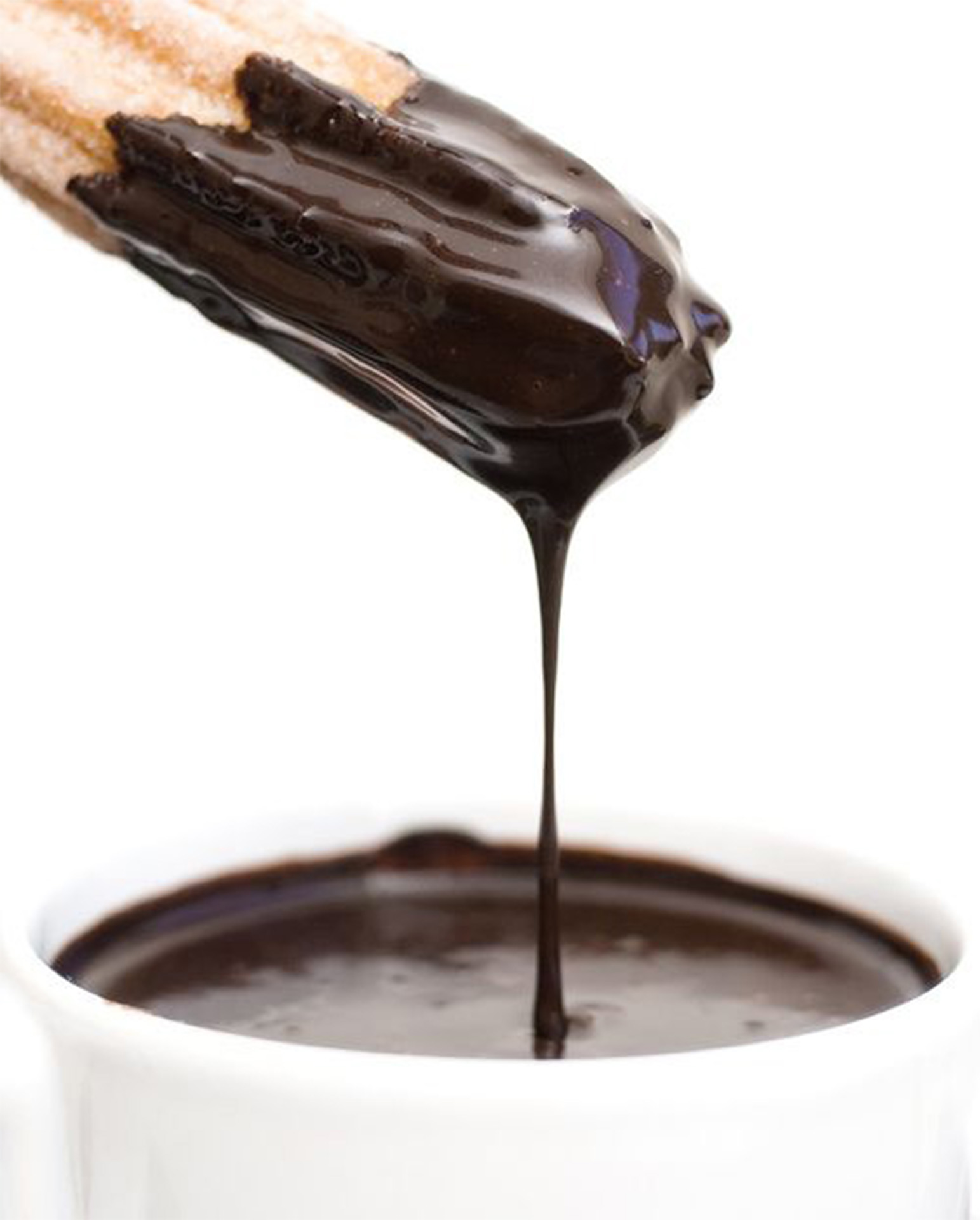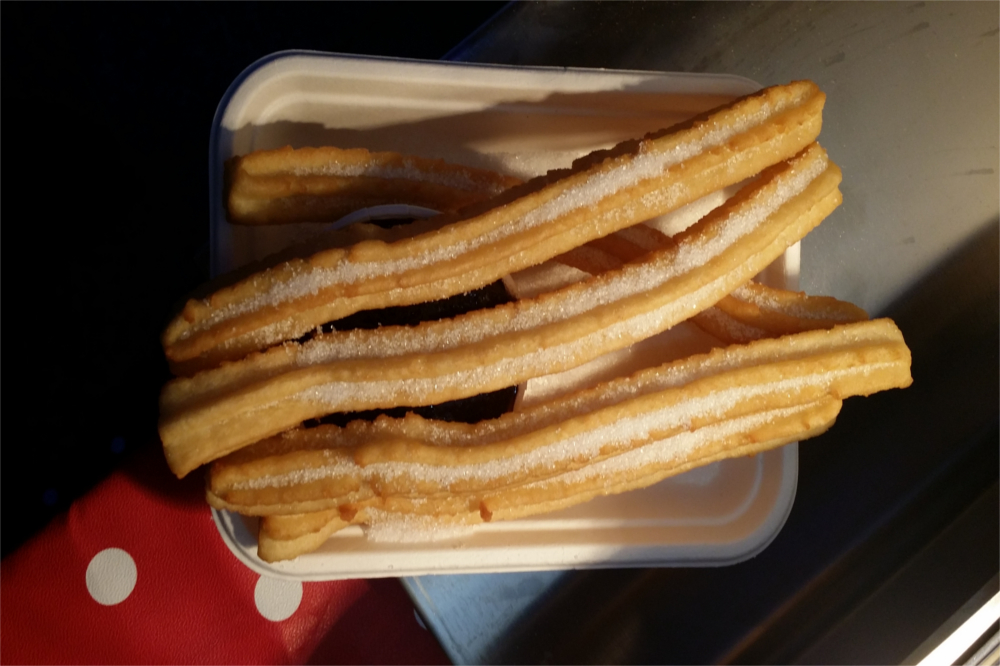Product
A churro is a fried-dough pastry snack. Churros are popular in Spain, Portugal, France, the Philippines, Ibero-America and the Southwestern United States. In Spain, churros can either be thin (and sometimes knotted) or long and thick. They are normally eaten for breakfast dipped, hot chocolate or café con leche.

Variations
In Seville (Andalusia), the name “calientes” or “calentitos de rueda” is sometimes used instead of the word churro. These tend to refer to the thicker variant, called porrain northern Spain, the Basque Country and other regions. Calientes are usually fried in the shape of a continuous spiral and cut into portions afterwards. The center of the spiral is thicker and softer, and for many a delicacy in itself. The standard “churro” is also sold under the name “calentitos de papas”, the name referring to the softer mashed potato–like texture.
In parts of Eastern Andalusia, a much thinner dough is used, which does not allow for the typical ridges to be formed on the surface of the churro. The final result therefore has a smooth surface, and is more pliable and of a slightly thinner diameter than standard Spanish churros. Another difference is that sugar is never sprinkled on them, because the flavour is not considered suitable.
source: wikipedia


